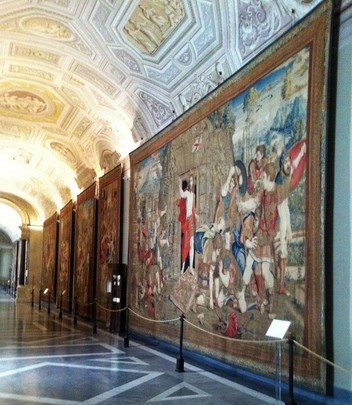
The workshop specialized in luxurious production. The ateliers were converted to use the techniques allowing the use of finest materials, fine details and artistic expression.
Refined tapestry production required big investment to purchase the costly raw material (linen, wool, silk, gold and silver) and the qualified technicians.
Entrepreneurs merchants anticipated the money needed for the tapestry production and to support the payment delays of the buyers.
Sometimes the merchants were directly the customers selling afterward the artworks to the high aristocracy.
The Medici family had bank offices in northern Europe and contribute to spreading tapestry art in Europe and Italy..
Along the 14th hundred Italian cities tried to attract specialized weavers to create tapestry manufactories.
The first was established in Modena in 1419.
The Estense family in Ferrara created a tapestry workshop in 1430 with foreign technicians working with paintings from local artists.
The city of Milan and Florence followed. In Rome along the 16th hundred a workshop was created by the Barberini, a papal family.



